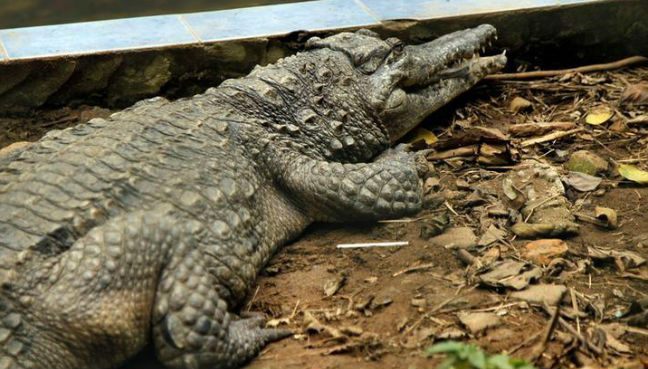This technique scans a tooth and measures the complexity of its surfaces.
這項技術掃描牙齒并測量其表面的復雜性。
Use of OPCR has demonstrated, in a quantifiable manner, that diet is closely related to tooth complexity.
OPCR的使用以可量化的方式證明,飲食與牙齒復雜性密切相關。
Carnivores tend to have simple teeth. Omnivores have more complex teeth. Herbivores have the most complex teeth of all.
食肉動物的牙齒比較簡單。雜食動物的牙齒更復雜。食草動物的牙齒是所有牙齒中最復雜的。
Until now, however, the technique has been used mostly on the molars of living mammals.
但直到現在,這項技術主要用于現存哺乳動物的臼齒。
Indeed, Mr Melstrom and Dr Irmis knew of no studies that had tested it extensively on crocodiles and their kin.
事實上,Melstrom和Irmis博士都不知道有任何研究對鱷魚及其近親進行的廣泛測試。
This lack of testing made sense, because living crocodilians have no complex tooth morphologies to analyse—so why bother?
缺乏這種測試是有道理的,因為現存的鱷魚沒有復雜的牙齒形態來分析,所以為什么要麻煩呢?
However, the strange teeth of ancient crocodiles, they reasoned, might give OPCR something to work with.
但他們推斷,遠古鱷魚奇怪的牙齒可能會給OPCR提供一些啟發。
In total, they threw146 teeth from16 extinct crocodilians at OPCR.
他們一共對16只滅絕鱷魚的146顆牙齒進行OPCR分析。

For comparison, they also added teeth from a modern caiman into the mix.
為了進行對比,他們還加入了現代凱門鱷的牙齒。
The analysis revealed that two of the extinct species were, like the caiman, carnivorous.
分析顯示,其中兩個滅絕的物種,和凱門鱷一樣,是食肉動物。
But even these were notably different from modern animals in that one had serrated steak-knife-like teeth
但即使是這些動物也與現代動物有明顯的不同,一種動物有鋸齒狀的牛排刀狀牙齒,
and the other had triangular teeth that made contact with one another when the animal closed its mouth
另一種動物有三角形的牙齒,當動物的嘴閉上時,這些牙齒就會互相接觸
(something not seen in modern crocodilians). The system identified two of the species as "durophagus",
(這是現代鱷魚所沒有的)。系統鑒定出其中兩種為“具有硬殼或外骨骼的生物體”,
meaning that their teeth looked as if they would be good at crushing the shells of clams, crabs and other armoured invertebrates.
這意味著它們的牙齒似乎很擅長咬碎蛤蜊、螃蟹和其他甲殼類無脊椎動物的外殼。
One species was identified as omnivorous. And eight, including Simosuchus, were identified by OPCR as obligate herbivores.
一種被鑒定為雜食動物。八種,包括迷你鱷魚,被OPCR鑒定為專性食草動物。
(The other three were hard to classify, but may have been insectivores.)
(其他三只很難分類,但可能是食蟲動物。)
What particularly surprised Mr Melstrom and Dr Irmis, though, was the way herbivory mapped onto the crocodile family tree.
讓Melstrom和Irmis博士感到特別驚訝的是這種食草性映射在鱷魚族譜上的方式。
Rather than evolving once at some point long ago and then appearing in all later species on that branch,
這種食草性不是在很久以前的某個時候進化過一次,然后出現在那個分支上的所有后來的物種中,
it came into existence at least three times during the history of these reptiles.
而是在這些爬行動物的歷史中至少出現過三次。
Herbivorous crocodiles of the Jurassic and Cretaceous, then,
侏羅紀和白堊紀時代的食草鱷魚
were capable of competing successfully with their dinosaur counterparts in a way that
能夠成功地與它們的恐龍同伴競爭
a modern herbivorous crocodile presumably could not with the plethora of herbivorous mammals that now exists.
但現代食草鱷魚可能無法用這種方式和現存的過多的食草哺乳動物成功競爭。
譯文由可可原創,僅供學習交流使用,未經許可請勿轉載。











